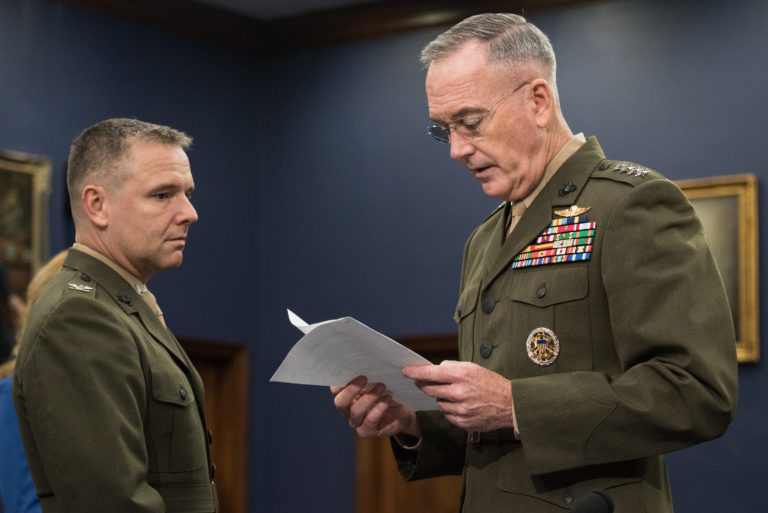Bad Idea: Arguing Over Capabilities- vs. Threat-based Planning

There is nary a more disliked phrase in Pentagonese than capabilities-based planning. One writer mourns that it has “effectively preempted strategy development.”[1] Another that it drives “artificial selection” to justify big, expensive acquisition programs.[2] One argues for a return to its predecessor, threat-based planning, to provide “clear and identifiable benchmarks.”[3] These concerns reflect a largely false debate over the relevancy of threat assessment in different schools of force planning. Never has terminology—threat-based versus capabilities-based—been more inhibiting to informed discussion of needs analysis. How did we get here?
In the late 1990s, some defense analysts became concerned that the canonical scenarios on which the Defense Department had built force development plans were too narrow to capture the range of likely future military engagements. They termed this legacy approach “threat-based planning.” The two scenarios commonly used at the time focused on responding to a North Korean invasion of South Korea and an Iraqi attack on Saudi Arabia and Kuwait. Force developers instead began to promote the use of a broader range of plausible scenarios in force planning. The most fully articulated framework in this genre was put forward by RAND analyst Paul Davis and his colleagues.[4] Davis eventually called his approach “capabilities-based planning.”[5]
As 9/11 and the ensuing years of U.S. military engagement have demonstrated, Davis and like-minded analysts were right to worry. The range of operations experienced by the U.S. military has extended much further than the 1990s scenarios envisioned, from large-scale counterinsurgency and dispersed irregular warfare to deterring advanced nuclear states. As to the canonical scenarios themselves, the United States invaded Iraq, not the other way around; and North Korea has yet to invade South Korea, while concern about a range of other potential Korean contingencies has grown.
Given this empirical evidence, it is surprising to hear occasional yearning for so-called threat-based planning. No one today advocates assessing only two specific threat vectors, from source to strategy to tactics. Yet that is the very definition of threat-based planning. Lingering admiration for threat-based planning appears to reflect an affection for the term (its inclusion of the word “threat” is deeply strategically satisfying) more than an embrace of its narrow approach to assessing the future. Despite popular belief to the contrary, threat assessment is also critical to capabilities-based planning.[6] The difference between the two approaches is in the range of threats to be examined. Caricaturing capabilities-based planning as void of threat assessment perpetuates a myth, just as caricaturing threat-based planning as “planning focused on threats” is a myth.
This false debate is more than just bothersome. It obfuscates a more pertinent one about how threats should be weighed and analyzed along a certainty-uncertainty spectrum. In particular, how should we prioritize investments between what we know today (evidenced gaps in capability) and what may come in the future (needs that a broad set of scenarios could reveal)? The more certain we are about the specific scenarios around which to build future US military capabilities, the more useful they are to the force developer. Even in cases of reasonable certainty, however, ignoring plausible threats beyond the point scenarios we have envisioned is imprudent for stress-testing the force. The world is not static, and adversaries are constantly looking to adapt. Myopia can occur not just about the source of threats (e.g., Russia, China, or ISIS) but also about the strategies, operational concepts, and tactics such threats may employ (e.g., new generation warfare, anti-access area denial, information operations, etc.). With an expanded set of threat assessments on which to base force development, it is easier to overcome the “fight tonight” instincts that straight-line project our own capabilities needs into the future.
Doomed by misperceptions, abetted by an extraordinarily poor description in the 2001 QDR, capabilities-based planning cannot be resurrected.[7] To borrow an adage: if you need to keep explaining, you’ve probably already lost. But decrying the decline of threat-based planning is misguided. Perpetuating a debate over the meaning of these terms is not only unconstructive, it is destructive. It creates needless tribalism that misdirects energy away from resolving the most pressing tensions facing the modern force developer. It is better to focus on improving our ability to prioritize investments in light of realized requirements and possible threat, concept, and capability evolutions.
Footnotes
[1] Col. Michael W. Pietrucha, “Capabilities-Based Planning and the Death of Military Strategy,” USNI News, August 5, 2015. [2] Sharon Burke, guest columnist, in Tom E. Ricks, “THE PENTAGONER: The Long, Slow Death of Capabilities-Based Planning,” Foreign Policy, January 5, 2015. [3] Tony Balasevicius, “Is It Time to Bring Back Threat-Based Planning?” Mackenzie Institute, April 6, 2016. Accessed at http://mackenzieinstitute.com/is-it-time-to-bring-back-threat-based-planning/. [4] An early description of this approach of broadening developers’ scenario sets can be found in Paul K. Davis, David Gompert, and Richard L. Kugler, “Adaptiveness in Defense Planning: The Basis of a New Framework,” in Strategic Appraisal 1997: Strategy and Defense Planning for the 21st Century, Zalmay Khalilizad and David O. Ochmanek, eds. (Santa Monica: RAND, 1997), 69-94. [6] Davis, 8. [7] Donald H. Rumsfeld, forward to the 2001 Quadrennial Defense Review, Department of Defense, September 30, 2001, p. iv.This report is produced by the Center for Strategic and International Studies (CSIS), a private, tax-exempt institution focusing on international public policy issues. Its research is nonpartisan and nonproprietary. CSIS does not take specific policy positions. Accordingly, all views, positions, and conclusions expressed in this publication should be understood to be solely those of the author(s).
© 2017 by the Center for Strategic and International Studies. All rights reserved.

